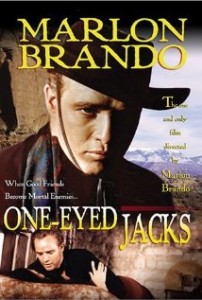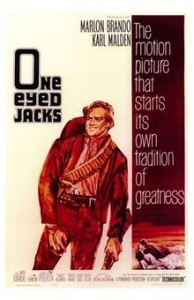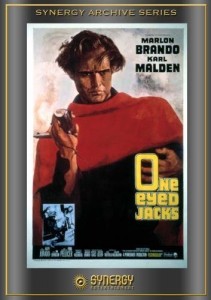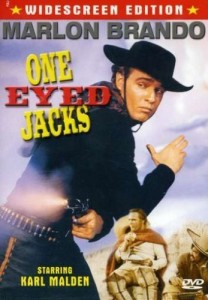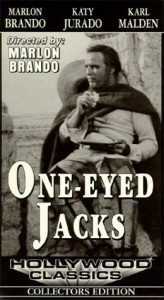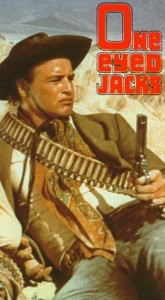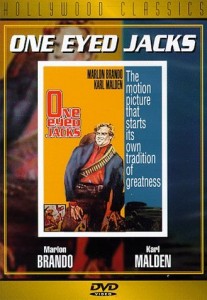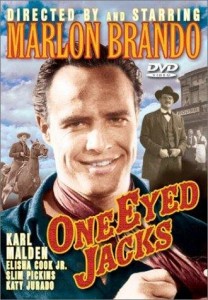One-Eyed Jacks ***** (1961, Marlon Brando, Karl Malden) – Classic Movie Review 1678
Director/star Marlon Brando’s legendary 1961 revenge Western is an explosive emotional and visual powderkeg, with a great flavour of the Old West. It was a troubled production but that doesn’t show on screen.
Brando took over as director from Stanley Kubrick, and relishes one of his iconic roles as Rio, the outlaw seeking revenge on his former buddy and partner Dad Longworth (Karl Malden) who betrays him at the outset when the duo are running from the law after a bank robbery in Mexico. Longworth takes their stolen gold and leaves Rio to be captured. But now, years later, the burnt-up Rio escapes from jail and hunts down Longworth Dad for revenge, living as a supposedly respectable sheriff in California.
The drivingly powerful material and masochistic star role are ideally suited to Brando’s personality, while Malden is successfully cast against type and properly chilling. Hugo Friedhofer’s feisty score and Charles Lang Jr’s lovely, Oscar-nominated widescreen Technicolor cinematography (Paramount’s last release in VistaVision) are major assets, and so are lively performances of the rich support cast, especially Katy Jurado, Slim Pickens, Ben Johnson, Timothy Carey, Elisha Cook Jr and Larry Duran.
The cast also includes Pina Pellicer, Sam Gilman, Margerita Codova, Miriam Colon, Rodolfo Acosta, Ray Teale, John Dierkes, Hank Worden and Nina Martinez. With a screenplay credited to Guy Trosper and Calder Willingham, based on Charles Neider’s novel The Authentic Death of Hendry Jones, One-Eyed Jacks is memorable and often great stuff.
It is surprisingly successful considering that it was indeed such a troubled production with a chequered history. The book was a fictional treatment of the familiar Billy the Kid story, relocated from New Mexico to the Monterey Peninsula in California and the character of Rio was originally based on Billy the Kid (Rio is also called The Kid in the film). But the story was rejected and the character had to be drastically changed as Brando didn’t want to play a villain.
Producer Frank P. Rosenberg the rights to the novel and worked on the script with Rod Serling, but hired Sam Peckinpah to rewrite it and then hired Kubrick as director. Brando and Kubrick then fired Peckinpah and brought in Calder Willingham for more rewriting, but later Rosenberg fired him and hired Guy Trosper, and also fired Kubrick. Then Brando replaced Kubrick as director. Brando’s inexperience as a director showed during filming. He was indecisive and shot six times the normal amount of footage, running into over time. It’s a pity but it turned out to be the only film Brando directed.
Paramount Studio executives slashed his footage and added a new ending, but the drama’s brooding atmosphere and strong set pieces survive intact. You very rarely side with the studio in an argument with a director, but Brando’s first cut of the film was an impossible five hours long.
With the film’s limited box-office success and mixed critical reception, Brando was unhappy with the final cut, which ended up at a fairly compact 141 minutes. ‘Now, it’s a good picture for them [the studio],’ he said on its release. ‘But it’s not the picture I made. Now the characters in the film are black and white, not grey and human as I planned them.” It made little money, leading to a series of unsuccessful films for Brando.
But the long view is in the film’s favour as one of the first and most impressive Westerns to portray a bad man as somebody the audience can identify with, leading to the revival of the genre in Europe with Sergio Leone’s Spaghetti Westerns.
© Derek Winnert 2014 Classic Movie Review 1678
Check out more reviews on http://derekwinnert.com/

